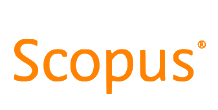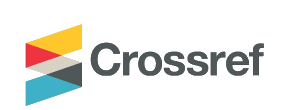Delivering work-ready business graduates - keeping our promises and evaluating our performance
DOI:
https://doi.org/10.21153/jtlge2013vol4no1art558Keywords:
employability, graduate, undergraduate, business, competencies, generic skillsAbstract
Business schools globally are responding to calls for graduate work-readiness primarily through the development of employability skills, encompassing career management skills, and work integrated-learning (WIL). There has been considerable attention to clarifying precisely which skills should be developed, and how, but far less on evaluating employability skill provision and its impact on graduate work-readiness. This is increasingly important as industry worldwide continues to lament graduate inadequacies in certain employability skills and the extent to which they are job-ready. This paper outlines a systematic approach for evaluating employability skill outcomes and the effectiveness of learning programs in developing these skills. The approach was developed in a learning program dedicated to developing employability skills in business undergraduates in an Australian university. It may assist other universities in communicating, assessing, mapping and reporting their employability skills outcomes; an integral component of all business undergraduate programs, and now a requirement of all Australian higher education providers (TEQSA, 2011). The approach provides a means of evaluating program effectiveness in skill provision, enabling a more informed review of curricula content, assessment and pedagogical techniques to achieve better alignment with industry requirements.
Metrics
References
Allen, J. & Van Der Valden, R. (2005). The role of self-assessment in measuring skills. Maastricht, Netherlands: Research Centre for Education and the Labour Market.
Australian Chamber of Commerce and Industry [ACCI] (2002). Employability skills - An employer perspective: Getting what employers want out of the too hard basket. Canberra: Australian Government Publishing Service.
Australian Learning and Teaching Council [ALTC] (2010). The learning and teaching academic standards project – final report. Strawberry Hills, NSW: ALTC.
Australian Qualification Framework Council [AQFC] (2009). Strengthening the AQF: An architecture for Australia’s qualifications. Adelaide: AQFC.
Barrie, S. (2005). Rethinking Generic Graduate Attributes. HERDSA News, 1 April 2005.
Barrie, S. (2006). Understanding what we mean by the generic attributes of graduates. Higher Education, 51(2), 215–241.
Barrie, S., Andrews, J., Dean, L. & Heimanis, I. (2010). Employability: Realising the potential of a university education. In S. Denton & S. Brown (Eds.) A practical guide to university and college management: Beyond bureaucracy. London: Routledge, 283–302.
Bath, D., Smith, C., Stein, S. & Swann, R. (2004). Beyond mapping and embedding
graduate attributes: Bringing together quality assurance and action learning to create a validated and living curriculum. Higher Education Research & Development, 23(3), 313–328.
Bennett, N., Dunne, E. & Carre, C. (1999). Patterns of core and generic skill provision in Higher Education. Higher Education, 37(1), 71–93.
Biggs, J. & Tang, C. (2006). Teaching for quality learning at university: What the student does. Buckinghamshire: Society for Research into Higher Education and Open University Press.
Boud, D. & Garrick, J. (1999). Understanding learning at work. London: Routledge.
Bransford, J. & Schwartz, D. (1999). Rethinking transfer: A simple proposal with multiple implications. Review of Research in Education, 24(1), 61-100.
Business Council Australia [BCA] (2006) Changing paradigms: Rethinking innovation policies, practices and programs. BCA, Melbourne.
Business, Industry and Higher Education Collaboration Council [BIHECC] (2007). Graduate employability skills. Canberra: BIHECC.
Boyatzis, R. (2009). Competencies as a behavioural approach to emotional intelligence. Journal of Management Development, 28(9), 749–770.
Bridgestock, R. (2009). The graduate attributes we’ve overlooked: Enhancing graduate employability through career management skills. Higher Education Research and Development, 28(1), 31–44.
Confederation of British Industry [CBI] (2009). Future fit: Preparing graduates for the world of work. London.
Council for Industry and Higher Education [CIHE] (2008). Graduate employability: What do employers think and want? London: CIHE.
Cox, S. & King, D. (2006). Skill sets: An approach to embed employability in course design. Education + Training 48(4), 262–274.
Cranmer, S. (2006). Enhancing graduate employability: best intentions and mixed outcomes.Studies in Higher Education, 31(2), 169–84.
Dacre Pool, L. & Sewell, P. (2007). The key to employability: Developing a practical model of graduate employability. Education + Training, 49(4), 277–289.
Department of Education, Science and Training [DEST] (2002). Employability skills for the future. Canberra: DEST.
Department of Education, Training and Youth Affairs [DETYA] (1998). Learning for life: review of higher education financing and policy. Report for Higher Education Financing and Policy Reviewing Committee (West Review). Canberra: DETYA.
Down, C. (2003). Employability Skills: Revisiting the Key Competencies or a new way forward? Proceedings of the11th Annual International Conference on Post-Compulsory Education and Training, Queensland, Australia, Centre for Learning Research, Griffith University,171–178.
Eby, L., Butts, M. & Lockwood, A. (2003). Predictors of success in the era of the boundaryless career. Journal of Organizational Behavior, 24, 689–708.
Eraut, M. (2004). Transfer of knowledge between education and workplace settings. In H. Rainbird, A. Fuller & A. Munro (Eds.) Workplace learning in context. London: Routledge, 201–221.
Freeman, M. & McKenzie, J. (2002). SPARK, a confidential web–based template for self and peer assessment of student teamwork: benefits of evaluating across different subjects. British Journal of Educational Technology, 33(5), 551–569.
Freeman, M., Hancock, P., Simpson, L., Sykes, C., Petocz, P., Densten, I. & Gibson, K., (2008). Business as usual: a collaborative and inclusive investigation of existing resources, strengths, gaps and challenges to be addressed or sustainability in teaching and learning in Australian university business faculties. Accessed by http://www.altc.edu.au/project-business-usual-collaborative-sydney-2006.
Freudenberg, B., Brimble, M. & Cameron, C. (2011). WIL and generic skill development: The development of business students’ generic skills through work-integrated learning. Asia-Pacific Journal of Cooperative Education, 12(2), 79–93.
Gault, J., Leach, E. & Duey, M. (2010). Effects of business internships on job marketability: the employers’ perspective. Education + Training, 52(1), 76–88.
Hakel, M. & Halpern, D. (2005). How far can transfer go: Making transfer happen across physical, temporal and conceptual space. In J. Mestre (Ed.) Transfer of learning from a modern multidisciplinary perspective (357–370). Greenwich, CT: Information Age Publishing.
Halfhill, T. & Nielsen, T. (2007). Quantifying the ‘softer side’ of management education: An example using teamwork competencies. Journal of Management Education, 31(1), 64–80.
Hampson, I. & Junor, A. (2009). ‘Employability’ and the substance of soft skills. Proceedings of the 27th International Labour Process Conference, Edinburgh, Scotland.
Hancock, P., Howieson, B., Kavanagh, M., Kent, J., Tempone, I. & Segal, N. (2009). Accounting for the future: More than numbers, Volume 1. Australian Learning and Teaching Council, Strawberry Hills, NSW: ALTC.
Hart Research Associates (2010). Raising the bar: Employers’ views on college learning in the wake of the economic downturn. Washington, DC: Association of American Colleges and Universities.
Jackson, D. (2009). Profiling industry relevant management graduate competencies: The need for a fresh approach. International Journal of Management Education, 8(1), 85–98.
Jackson, D. (2010). An international profile of industry relevant competencies and skill gaps in modern graduates. International Journal of Management Education, 8(3), 29–58.
Jackson, D. & Chapman, E. (2012). Non-technical competencies in undergraduate Business degree programs: Australian and UK perspectives. Studies in Higher Education, 37(5), 541–567.
Jenkins, A. (2009). Research-teaching linkages: Enhancing graduate attributes. Overview: The aims, achievements and challenges from the Enhancement Theme. Report for Quality Assurance Agency [QAA]. UK: QAA.
Jones, A. (2010). Generic attributes in Accounting: The significance of disciplinary context. Accounting Education, 19(1-2), 5–21.
Kotzee, B. & Johnston, R. (2011). ‘Can’t string a sentence together’?. UK employers’ views of graduates’ writing skills. Industry and Higher Education, 25(1), 45–52.
Krathwohl, D. (2002). A revision of Bloom's taxonomy: An overview. Theory into Practice, 41(4), 212–218.
Lawson, R., Fallshaw, E., Papadopoulos, T., Taylor, T. & Zanko, M. (2011). Professional learning in the Business curriculum: Engaging industry, academics and students. Asian Social Science, 7(4), 61–68.
Lieberman, S., McDonald, L. & Doyle, S. (2006). The transfer of learning: Participants' perspectives of adult education and training. Aldershot, UK: Gower Publishing.
Liberal Education & America’s Promise [LEAP] (2007). College Learning for the New Global Century. Washington: The National Leadership Council for LEAP.
Lizzio, A. & Wilson, K. (2007). Developing critical professional judgement: The efficacy of a self-managed reflective process. Studies in Continuing Education, 29(3), 277–293.
Male, S. & Chapman, E. (2005). Assessing the generic competencies of Engineering graduates: Preliminary report from an ongoing research project. Proceedings of the 2005 ASEE / AAEE 4th Global Colloquim on Engineering Education.
McInnis, C. & Hartley, R. (2009). Managing study and work: The impact of full-time study and paid work on the undergraduate experience in Australian universities. Report for the Department of Education, Science and Training [DEST]. Canberra: DEST.
McNeill, M., Gosper, M. & Hedberg, J. (2008). Engaging students with higher order learning (or not): Insights into academic practice. Proceedings of the ATN Assessment Conference 2008, 20–21 November, University of South Australia, Adelaide.
Meyers, N. & Nulty, D. (2009). How to use (five) curriculum design principles to align authentic learning environments, assessment, students’ approaches to thinking and learning outcomes. Assessment & Evaluation in Higher Education, 34(5), 565–577.
Nilsson, S. (2010). Enhancing individual employability: The perspective of engineering graduates. Education + Training, 52(6/7), 540–551.
Oliver, B. (2011). Assuring graduate capabilities: An approach to determining and evidencing standards. Proceedings of the Australian Quality Forum 2011, Melbourne, Australia, 120–126.
Oliver, B., Ferns, S., Whelan, B. & Lilly, L. (2010). Mapping the curriculum for quality enhancement: Refining a tool and processes for the purpose of curriculum renewal. Proceedings of the Australian Universities Quality Forum 2010, Gold Coast, Queensland, 80–88.
Papadopoulos,T. (2010). Beyond discipline and technical knowledge: industry perspectives on the business curriculum. Industry and Higher Education, 24(2), 109–114.
Popovic, C. & Thomas, C. (2009). Creating future proof graduates. Assessment Learning and Teaching Journal, 5 (Spring 2009), 37–39.
Price, M., O’Donovan, B., Rust, C. & Carroll, J. (2008). Assessment standards: A manifesto for change. Brookes E-Journal of Teaching and Learning, 2(3).
Rae, D. (2007). Connecting enterprise and graduate employability: Challenges to the higher education culture and curriculum? Education + Training, 49(8/9), 605–619.
Robley, W., Whittle, S. & Murdoch-Eaton, D. (2005). Mapping generic skills curricula: a recommended methodology. Journal of Further and Higher Education, 29(3), 221–231.
Rumsey, D. (2005). Implementing employability skills in training and assessment. Accessed by https://vetinfonet-staging.det.wa.edu.au/course/docs/employability_skills.pdf.
Sadler, D. (2009). Indeterminacy in the use of preset criteria for assessment and grading. Assessment and Evaluation in Higher Education, 34(2), 159–179.
Sciulli, N., Smith, M. & Ross, P. (2009). Benchmarking the first year accounting unit: Evidence from Australia. Asian Journal of Finance & Accounting, 1(2), E1.
Smith, E. & Green, A. (2005). How workplace experiences while at school affect career pathways. Adelaide: National Centre for Vocational and Educational Research.
Starkey, K. & Tempest, S. (2009). From crisis to purpose. Journal of Management Development, 28(8), 700–10.
Taylor, A. (2005). What employers look for: The skills debate and the fit with youth perceptions. Journal of Education and Work, 18(2), 201–218.
Tariq, V., Scott, E., Cochrane, A., Lee, M. & Ryles, L. (2004). Auditing and mapping key skills within university curricula. Quality Assurance in Education, 12(2), 70–81.
Tertiary Education Quality and Standards Agency [TEQSA], (2011). Developing a framework for teaching and learning standards in Australian higher education and the role of TEQSA. Retrieved from http://www.deewr.gov.au/HigherEducation/Policy/teqsa/Documents/Teaching_Learning_Discussion_Paper.pdf
Tight, M. (2010). Are academic workloads increasing? The post-war survey evidence in the UK. Higher Education Quarterly, 64(2), 200–215.
Tomlinson, M. (2008). 'The degree is not enough': Students' perceptions of the role of higher education credentials for graduate work and employability. British Journal of Sociology of Education, 29(1), 49–61.
Tripp, D. (1993). Critical incidents in teaching: Developing professional judgement. London, Routledge.
Uchiyama, K. & Radin, J. (2008). Curriculum mapping in Higher Education: A vehicle for collaboration. Innovative Higher Education, 33(4), 271–280.
Wheeler, J. (2008). The impact of social environments on emotional, social, and cognitive development. Journal of Management Development, 27(1), 129–145.
Wittekind, A., Raeder, S. & Grote, G. (2010). A longitudinal study of determinants of perceived employability. Journal of Organizational Behavior, 1(4), 566–86.
Yorke, M. & Knight, P. (2004). Embedding employability into the curriculum. Learning and Employability Series One, April 2006. UK: The Higher Education Academy.










